How to Draw a Bus
With a gentle yet assured touch, I present to you a lesson crafted from my passion for teaching – how to draw a bus. This technique, born from my own experiences, transforms a complex vehicle into a series of simple, manageable elements, inviting you to discover the joy of creation within a few easy steps.

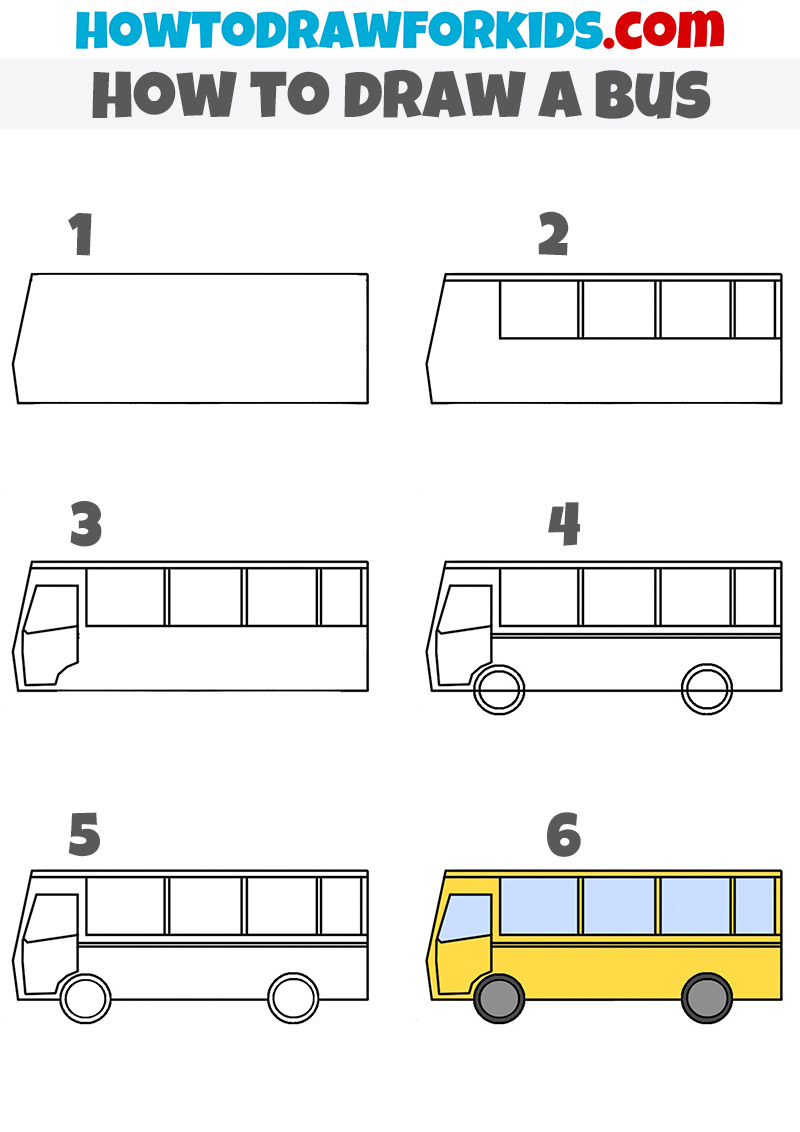
How to Draw a Bus: Basic Information
In the quest to demystify the art of the sketch, I’ve designed an easy-to-follow tutorial on how to draw a bus, leveraging a technique that distills complexity into simplicity. Here, you will not just sketch; you will channel your inner artist, embarking on a creative sojourn from a blank canvas to the bustling energy of a city bus.
Guided by my instructions, you’ll find joy in the symphony of straight lines and soft curves that create the bus’s silhouette. The challenge is not just to draw but to capture the spirit of the bus, its readiness to roam the streets – a dance of graphite that beckons the eyes and stirs the imagination.
In the final act of this artistic concerto, as you draw a bus into existence, it becomes a testament to the power of small strokes to craft grand tales. This is where a simple lesson transcends, turning students into storytellers, their canvas a vibrant narrative rolling off into the sunset of their burgeoning artistic journey.
Bus Drawing Tutorial
Step 1
First, let’s draw the general outlines of our bus. It is very similar to a rectangle with a modified front part.
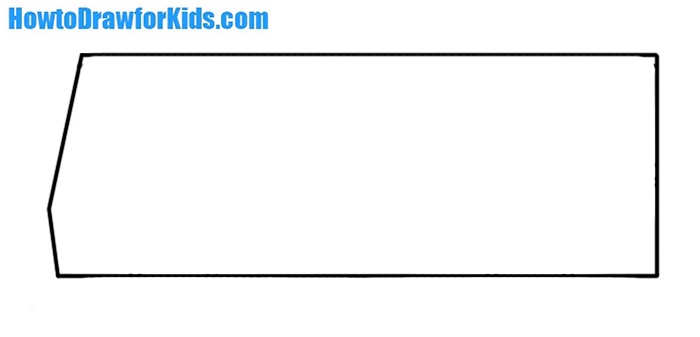
Step 2
Using straight lines draw out the windows as my example.&amp;amp;lt;/p></p>
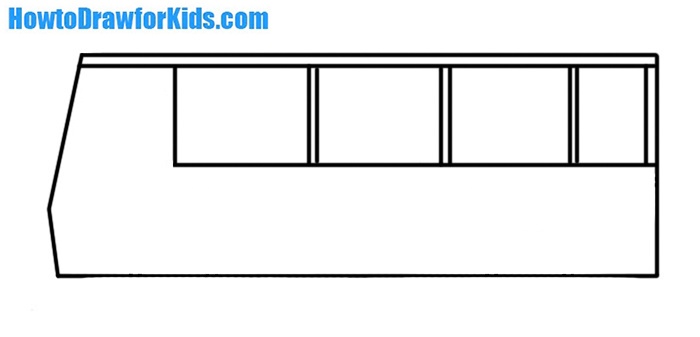
Step 3
At the front part of the bus draw out the door with a window.
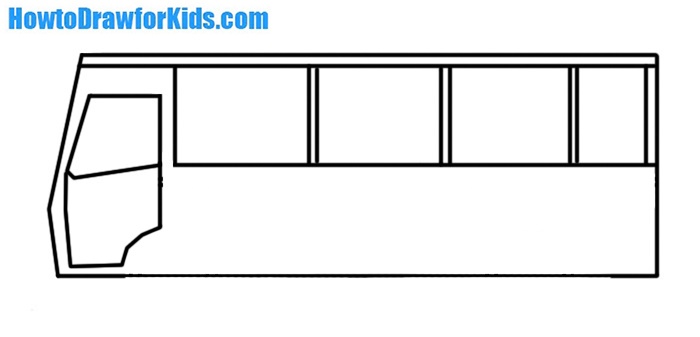
Step 4
At the lower part of the bus draw the wheels using circles.
<img class=”yoast-text-mark” />ass=”"</p” />
Step 5
Erase all guidelines to get such a bus as in my example.
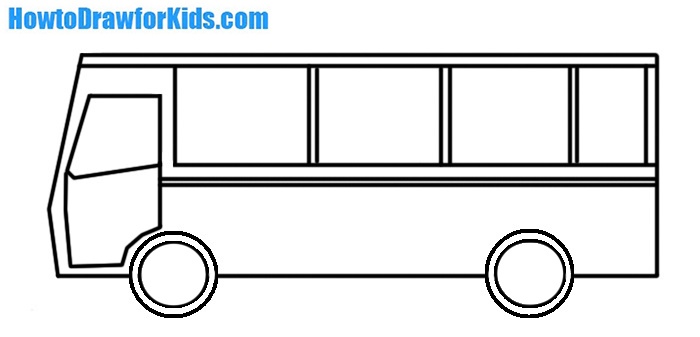
S
tep 6
<p>It remains for us to paint our bus. I painted the bus in yellow, but you can take any other color.

Additional Content
To complement the bus drawing tutorial, I have also compiled a free PDF file. This compact version is tailored for on-the-go practice, allowing you to hone your skills without the need for internet access. It’s the perfect supplement for those moments of sudden inspiration or quiet contemplation away from the screen.
Beyond the foundational stages, this PDF provides additional materials aimed at elevating your drawing prowess. It’s an after-class treasure, meant to be used once you’ve grasped the basics from the main lesson, filled with exercises and insights to refine your technique and add depth to your work.
This downloadable resource is a bridge to further your artistic journey, ensuring the path of learning is ever-extended. As you transition from drawing a simple bus to mastering more complex scenes, the PDF stands as a silent mentor, challenging you to not just practice, but to thrive in your creative pursuits.
Alternative Drawing Method
To ensure a well-rounded learning experience, I’ve devised an alternative technique for drawing a bus, tailored for ease and accessibility. This fresh approach simplifies the process, stripping down complexities to encourage practice and bolster your artistic confidence. It’s designed for those who find comfort in clarity and progress in incremental steps.
This new method is a gentle slope in the learning landscape, ideal for budding artists seeking to solidify their foundational skills. It focuses on the essentials, offering a serene path to improvement that complements the detailed intricacies of the original tutorial. With each line drawn, the joy of artistic growth becomes more tangible.
By presenting this simpler alternative, I aim to diversify your practice routine, fostering an environment where continual improvement is not just encouraged but inevitable. Engage with this technique, and watch as the lines you draw begin to echo the progress in your journey, crafting not only buses but also a more confident artist within you.
How to Draw a Bus for Kindergarten
For our youngest creators in kindergarten, this simple alternative method of drawing a bus transforms a complex vehicle into a series of joyous shapes. Beginning with a large rectangle and a rounded front, it’s a celebration of the bold and free-spirited lines that children naturally draw, perfect for their developing motor skills and confidence in art.
The method progresses as children add squares and rectangles for windows and doors, turning shape recognition into an interactive game. It’s a whimsical approach that entwines learning with play, allowing little ones to explore basic geometric forms while bringing their artwork to life, piece by piece.
In the final flourish, the bus’s wheels are added – circles that signify both the conclusion of the drawing and the beginning of imaginary travels. This technique, tailored for tiny hands, isn’t just about the final picture; it’s about providing a space for children to express themselves, to make their mark in the world of art.
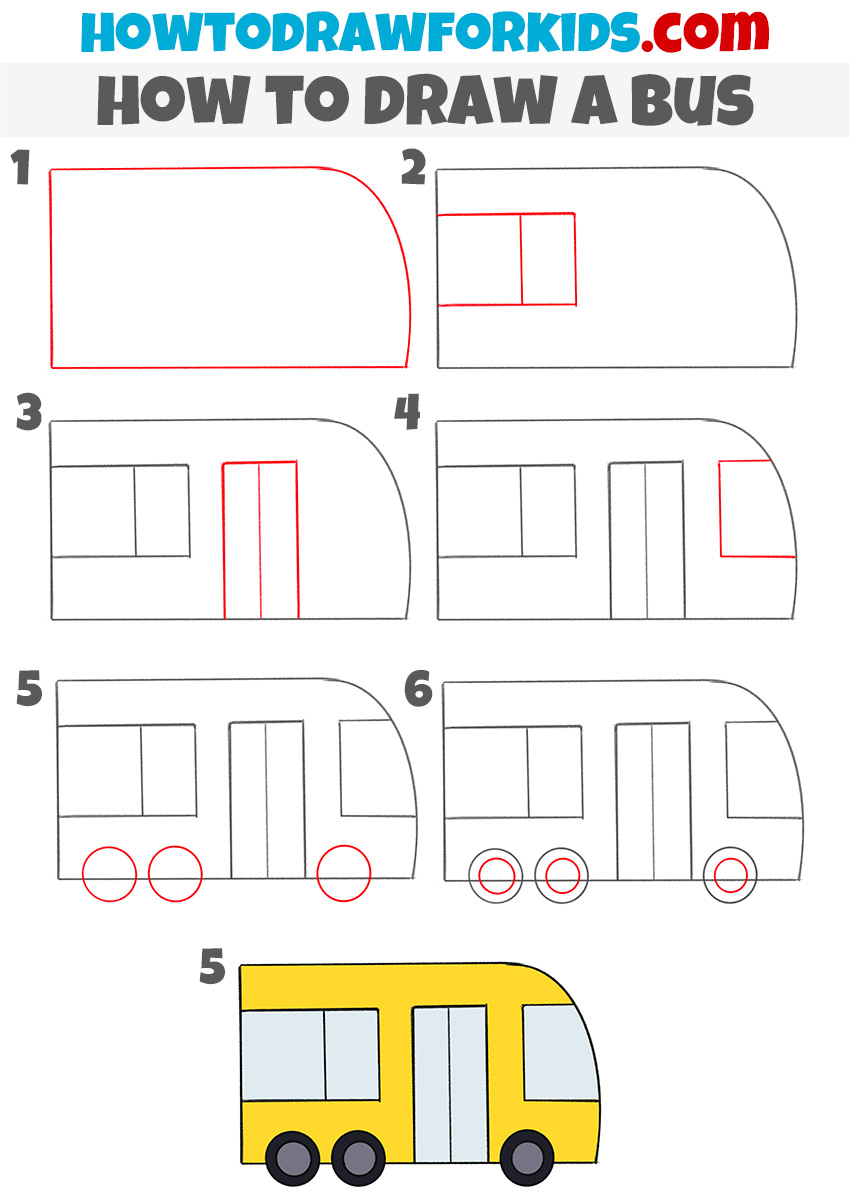
Key Mistakes to Sidestep in Bus Drawing for Beginners
In the dance of pencil on paper, our young artists have embarked on a journey to capture the essence of transportation, the humble yet complex bus. However, even in simplicity, there are pitfalls that await the unwary illustrator. Let us illuminate these common missteps so that we may steer clear and keep our artistic vehicles on the right track.
- Not maintaining straight lines for the bus body, leading to a wobbly structure.
- Windows of varying sizes can create a sense of disproportion.
- Overlooking the symmetry of the bus’s wheels, which may result in an unbalanced look.
- Applying uneven pressure while coloring, causing the final product to lack uniformity.
- Misplacing the horizon line, which can throw off the perspective.
- Neglecting to use light strokes initially, making corrections more challenging.
With each drawing, the aim is not just to replicate a form but to imbue your canvas with the illusion of depth, movement, and life. Let your bus not merely exist on paper but travel the avenues of your burgeoning creativity, leaving behind the scuffs of early attempts, evolving into a refined piece of art with each new stroke.
Addressing Your Top Bus Drawing Inquiries
In the tranquil aftermath of our bus drawing journey, a myriad of questions may yet linger, like soft shadows at dusk. Here, within this sanctuary of curiosity, we address the whispers of inquisition with a collection of FAQs, meticulously gathered to dispel any vestige of doubt that may cloud your artistic horizon.
- How can we ensure the bus is symmetrical? One might employ a simple ruler to measure and compare distances, ensuring both sides mirror each other in harmony.
- Why are the wheels not perfectly round? The charm of art made by children lies in its imperfection, which we celebrate rather than correct. Over time, practice naturally leads to improved shapes.
- Can this lesson be adapted for other vehicles? Indeed, the foundational shapes and principles apply broadly and can be creatively adapted to draw various types of vehicles.
- How can we add more detail to our bus drawing? Details such as shading, people inside the bus, or even a backdrop can be introduced gradually as one’s confidence and skill expand.
- How long should a child spend on each step? Time is less of a teacher than observation and feeling; hence, each step should last as long as needed to feel complete and understood by the young artist.
As the curtains fall on this artistic act, let these FAQs serve not as mere answers but as lanterns in the ever-growing night of learning. May they guide your path long after the echoes of this lesson fade, for the quest for knowledge is a road without end, and every question you ask paves it further still.
Conclusion
Having journeyed together through the structured world of buses, let us not end our artistic travels here. My website is a treasure trove of exploration, with lessons that flutter from the delicate wings of butterflies to the intricate lines of a human nose. Each tutorial is a new adventure, awaiting your curious spirit and eager pencil.
I invite you to join our community of creators by subscribing to my social networks, where the pulse of new content beats strong. Your thoughts and suggestions are the lifeblood of our creative future, so I welcome your comments beneath the lesson. Share your ideas, and together, we’ll draw not just art, but also inspiration from the well of our collective creativity.



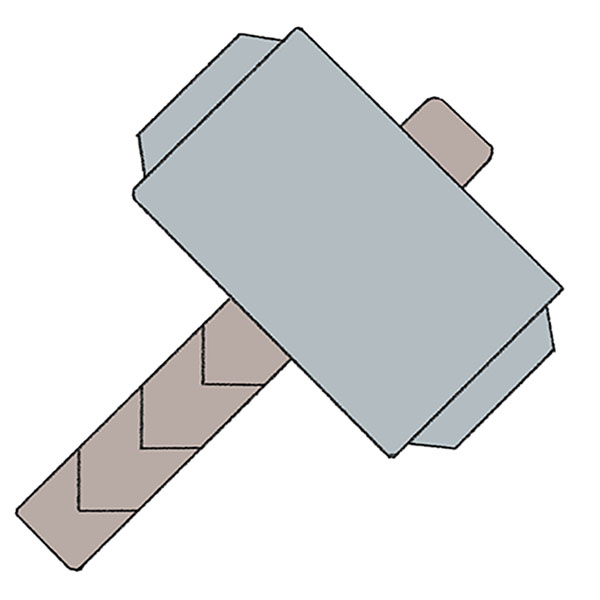

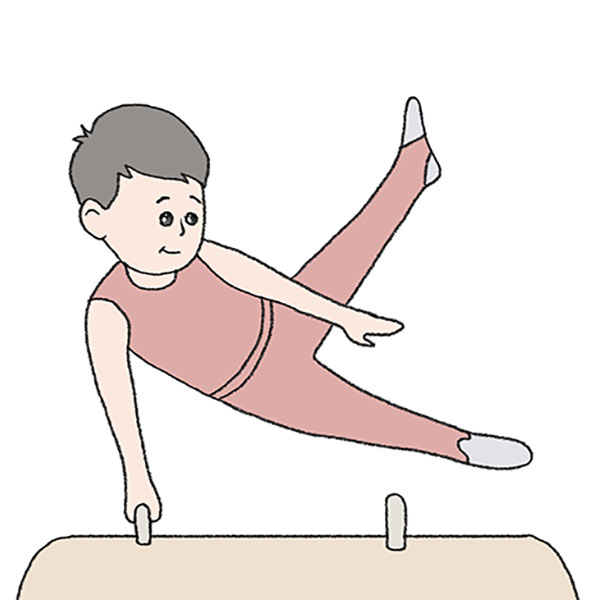


Thank you for this tutorial! Thank you!
draw it
Really awesome!!
Thank you so much, Anna.